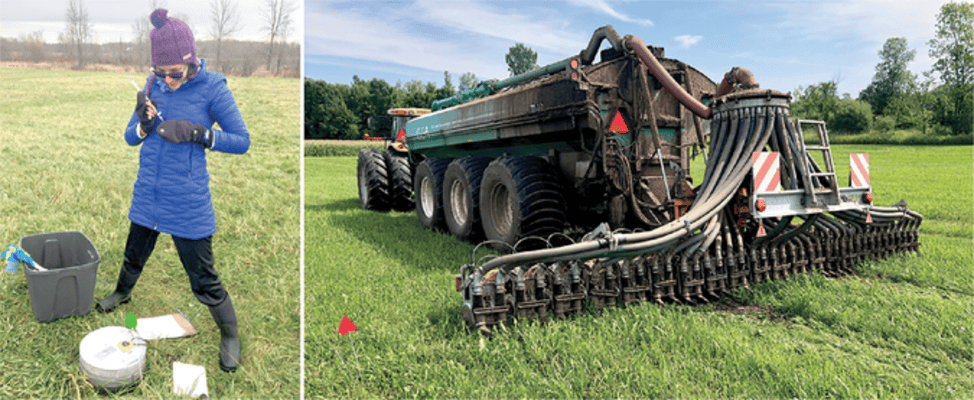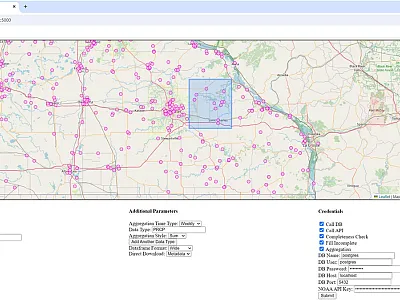Manure Application Methods Do Not Drive N2O Emissions in a Hayfield

Manure injection is an alternative manure application method that can reduce nitrogen and phosphorus runoff as well as decrease ammonia emissions. However, compared with the more typical practice of spreading manure on the soil surface, manure injection has been shown to increase emissions of nitrous oxide (N2O), a greenhouse gas with a warming potential 273 times that of carbon dioxide, therefore presenting an environmental trade‐off.
Because many previous studies of greenhouse gas emissions from manure injection were conducted in annual cropping systems, scientists at the University of Vermont examined whether there would still be elevated N2O fluxes when injecting manure in a perennial hayfield. In a two‐year field trial in Vermont, they found that mean daily N2O fluxes were comparable in the manure injection and surface manure application treatments. Rather than manure application method, soil moisture was the most important predictor of daily N2O fluxes, followed by soil inorganic nitrogen and soil temperature. Soil moisture and temperature interacted to produce the largest daily N2O fluxes when both were relatively high.
These results suggest that injecting manure during dry periods or during wet but cool periods could reduce its climate impacts.
Adapted from
Brickman, S., Darby, H., Ruhl, L., & Adair, E.C. (2024). Nitrous oxide emissions are driven by environmental conditions rather than nitrogen application methods in a perennial hayfield. Journal of Environmental Quality. https://doi.org/10.1002/jeq2.20536
Text © . The authors. CC BY-NC-ND 4.0. Except where otherwise noted, images are subject to copyright. Any reuse without express permission from the copyright owner is prohibited.







